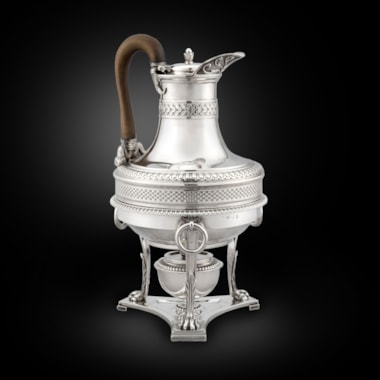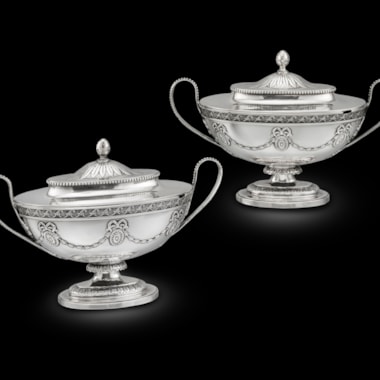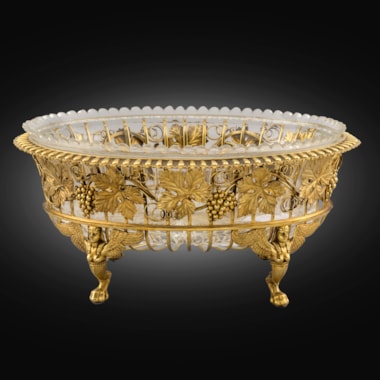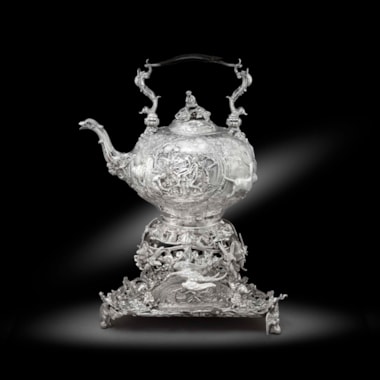Shaped oval, with bold gadroon rim intersected by alternating double-shells flanked by acanthus and anthemions at intervals, acanthus handles, supported on four bracket feet chased as double-shells with scrolls, grape bunches and foliage, the surface flat-chased and centred by a crest.
Son of Thomas Rundell doctor of Widcombe Bath, born 1743. Apprenticed to William Rodgers jeweller of Bath on payment of £20. Arrived in London, 1767 or 1769, as a shopman to Theed and Pickett, Ludgate Hill, at a salary of £20 p.a.. Made partner with Picket in 1772 and acquired sole ownership of the business in 1785-6. Took John Bridge into partnership in 1788 and his nephew Edmund Walter Rundell by 1803, the firm being styled Rundell Bridge and Rundell from 1805. Appointed Goldsmith and Jeweller to the King in 1797, due it is said, to George III's acquaintanceship with John Bridge's relative, a farmer near Weymouth. He took Paul Storr into working partnership in 1807, an arrangement that lasted until 1819, when the latter gained independence. Only then was Rundell's mark entered as plateworker, 4th March, 1819. Address: 76 Dean Street, Soho, (the workshop). In 1823 John Bridge enters his first mark and it seems probable therefore that it was about this time that Rundell retired. He did not die however until 1827, leaving his fortune of 1.25 million to his nephew Joseph Neeld.
You May Also Like











































































